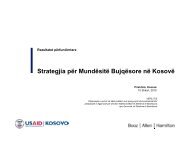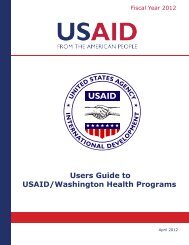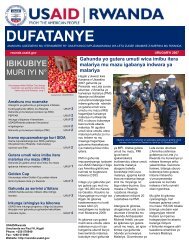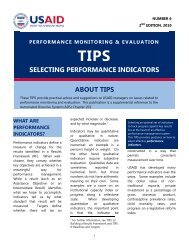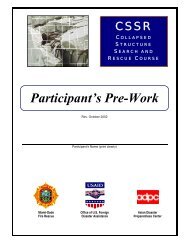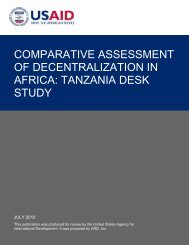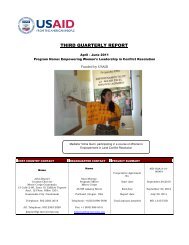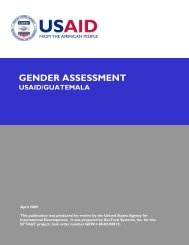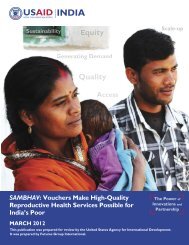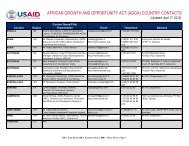Pre-Departure Orientation Manual - US Agency for International ...
Pre-Departure Orientation Manual - US Agency for International ...
Pre-Departure Orientation Manual - US Agency for International ...
You also want an ePaper? Increase the reach of your titles
YUMPU automatically turns print PDFs into web optimized ePapers that Google loves.
06/14/2012 New Edition<br />
cities in the regions include Raleigh, North Carolina; Columbia, South Carolina; and Nashville,<br />
Tennessee. The mid-southern region of the U.S. bases its economy on manufactured products<br />
such as textiles, tobacco, chemicals, farming, mining, furniture production and tourism.<br />
Deep South: This region is known <strong>for</strong> “southern hospitality” and remembered as where the<br />
Civil War both began and ended. Small agricultural communities are a striking contrast to the<br />
booming economies of the larger cities. Such cities as Atlanta, Georgia; Miami and Orlando,<br />
Florida; Montgomery, Alabama; and Baton Rouge, Louisiana have all changed the stereotype of<br />
the original quiet southern plantations of the south. Recent developments in industries such as<br />
agribusiness, textile manufacturing, transportation equipment, mining, <strong>for</strong>estry, petrochemicals<br />
and tourism have shown that the south is prepared to compete in the 21st century.<br />
South West: The Southwestern region has been<br />
popularized by old west tales of cowboys and Indians, but<br />
many things have changed in the area. The economy of<br />
the region has become quite diverse and includes such<br />
industries as mining, electronics, fabricated metals,<br />
agriculture, oil and natural gas, food products, lumber,<br />
scientific technology and tourism. Many large cities have<br />
experienced tremendous growth from recent economic<br />
developments in the south. Dallas and Fort Worth,<br />
Texas; Phoenix, Arizona; Santa Fe and Albuquerque, New<br />
Mexico have recently become well known cities in the U.S.<br />
CLIMATE ZONES<br />
The type of climate and weather you will experience on your program in the U.S. depends a great deal<br />
on the location of your university. Temperatures vary a lot throughout the U.S. and seven climate<br />
zones can be found across the country. Winter brings frequent snowfalls in the northern states, while<br />
the South generally remains temperate throughout the year. The Southwest tends to have hot, dry air,<br />
whereas the Southeast has hot, humid air. However, to some extent Americans are insulated from the<br />
natural weather extremes by their routine use of air-conditioning and heat. Homes, office, cars and<br />
buses are generally air-conditioned or heated to maintain 20-22 C (68-72 F). The United States is a<br />
very large country and as a result you may encounter, as isolated circumstances, certain weather<br />
conditions you would not be familiar with in Europe such as tornados or hurricanes. You will usually be<br />
alerted (by email from your university or on a local weather or news channel) if your area may be<br />
involved in such a weather pattern and what to do.<br />
CLIMATE OF 51 SELECTED U.S. CITIES<br />
City<br />
Average monthly temperature (°F) <strong>Pre</strong>cipitation Snowfall<br />
Jan. April July Oct.<br />
Average annual Average<br />
annual<br />
(in.) (days) (in.)<br />
Albuquerque, New Mexico 35.7 55.6 78.5 57.3 9.47 60 11.0<br />
Anchorage, Alaska 15.8 36.3 58.4 34.1 16.08 115 70.8<br />
Atlanta, Georgia 42.7 61.6 80.0 62.8 50.20 115 2.1<br />
Baltimore, Maryland 32.3 53.2 76.5 55.4 41.94 115 21.5<br />
26



